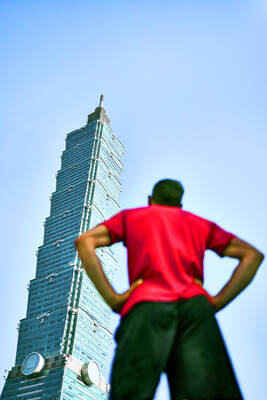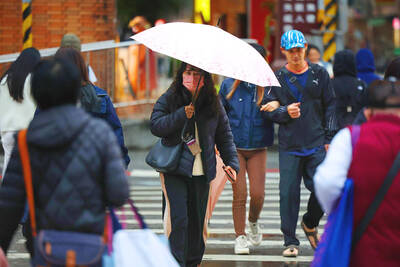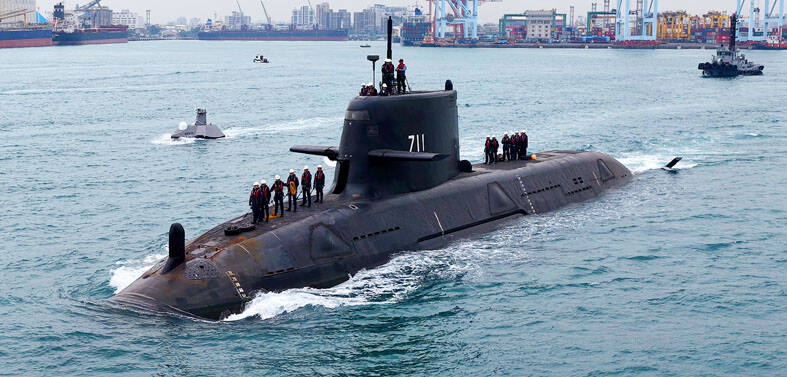The name plaque at National Taiwan Democracy Memorial Hall will be removed and replaced with the original Chiang Kai-shek Memorial Hall plaque by the end of July, Vice Minister of Education Lu Mu-lin (呂木琳) said yesterday.
Lu told a press conference at the ministry that the decision was in accordance with the law and resolutions passed by the Legislative Yuan.
Lu was referring to the Cabinet’s scrapping of a draft National Taiwan Democracy Memorial Hall organic act on Aug. 22 and the legislature’s agreement on Dec. 4 that the government withdraw a proposal to abolish the Organic Act of the Chiang Kai-shek Memorial Hall (中正紀念堂組織條例).
The legislature also resolved during its review of the central government’s fiscal budget request for this year that “the name of National Taiwan Democracy Memorial Hall should be changed to Chiang Kai-shek Memorial Hall.”
A resolution passed by the legislature on Tuesday last week said the ministry should replace the name plaque at the main building of the hall as soon as possible.
In 2007, the Democratic Progressive Party (DPP) administration renamed the memorial as part of a campaign to rename monuments and places that honored dictator Chiang Kai-shek (蔣介石).
The move was controversial in part because the changes were made without legislative approval. The replacement of the plaque at the hall led to scuffles between pan-blue and pan-green supporters, leaving a TV cameraman seriously injured.
“The ministry will first submit a plan for the name change and reuse [of the plaque] to the Council for Cultural Affairs and the Department of Cultural Affairs of the Taipei City Government in accordance with the Cultural Assets Protection Act (文化資產保護法) and related regulations,” Lu said.
Changing the plaque is expected to cost about NT$1 million (US$29,700), he said.
Lu said that although Minister of Education Cheng Jei-cheng (鄭瑞城) said in August last year that the ministry would not change the plaque unless a public forum organized by the ministry reached a consensus in favor of the change, no public forum was arranged.
Lu said this was because the majority of experts invited to a separate forum on educational issues felt that a forum gauging public opinion on the plaque change could increase tensions between supporters of different political parties.
“As for the ‘Liberty Square’ inscription at the entrance to the hall, no changes will be made to it since the square plays an important role in Taiwan’s democratic and cultural development,” Lu said.
The inscription will remain unchanged “so that [the public] can keep a shared memory of the development,” Lu said.
Lu said the honorary guard performances previously held at the memorial hall would also resume on Saturday at the suggestion of “tourism businesses, elected representatives and the public.”
“The ministry is a government branch and should do things in accordance with the law. The ministry has done its best to make the most appropriate decision and drawn up detailed plans [regarding the plaque change] to maintain social harmony. We hope this will put an end to the controversy and that the matter will not cause more fighting among members of the public,” Lu said, adding that the ministry’s decision would stand up to scrutiny.
When asked how the ministry would prevent possible tensions as a result of the plaque change, Lu called on the public to be “tolerant” and refrain from engaging in clashes over the change.

US climber Alex Honnold is to attempt to scale Taipei 101 without a rope and harness in a live Netflix special on Jan. 24, the streaming platform announced on Wednesday. Accounting for the time difference, the two-hour broadcast of Honnold’s climb, called Skyscraper Live, is to air on Jan. 23 in the US, Netflix said in a statement. Honnold, 40, was the first person ever to free solo climb the 900m El Capitan rock formation in Yosemite National Park — a feat that was recorded and later made into the 2018 documentary film Free Solo. Netflix previewed Skyscraper Live in October, after videos

NUMBERS IMBALANCE: More than 4 million Taiwanese have visited China this year, while only about half a million Chinese have visited here Beijing has yet to respond to Taiwan’s requests for negotiation over matters related to the recovery of cross-strait tourism, the Tourism Administration said yesterday. Taiwan’s tourism authority issued the statement after Chinese-language daily the China Times reported yesterday that the government’s policy of banning group tours to China does not stop Taiwanese from visiting the country. As of October, more than 4.2 million had traveled to China this year, exceeding last year. Beijing estimated the number of Taiwanese tourists in China could reach 4.5 million this year. By contrast, only 500,000 Chinese tourists are expected in Taiwan, the report said. The report

Temperatures are forecast to drop steadily as a continental cold air mass moves across Taiwan, with some areas also likely to see heavy rainfall, the Central Weather Administration (CWA) said. From today through early tomorrow, a cold air mass would keep temperatures low across central and northern Taiwan, and the eastern half of Taiwan proper, with isolated brief showers forecast along Keelung’s north coast, Taipei and New Taipei City’s mountainous areas and eastern Taiwan, it said. Lows of 11°C to 15°C are forecast in central and northern Taiwan, Yilan County, and the outlying Kinmen and Lienchiang (Matsu) counties, and 14°C to 17°C

STEERING FAILURE: The first boat of its class is experiencing teething issues as it readies for acceptance by the navy, according to a recent story about rudder failure The Hai Kun (海鯤), the nation’s first locally built submarine, allegedly suffered a total failure of stern hydraulic systems during the second round of sea acceptance trials on June 26, and sailors were forced to manually operate the X-rudder to turn the submarine and return to port, news Web site Mirror Daily reported yesterday. The report said that tugboats following the Hai Kun assisted the submarine in avoiding collisions with other ships due to the X-rudder malfunctioning. At the time of the report, the submarine had completed its trials and was scheduled to begin diving and surfacing tests in shallow areas. The X-rudder,